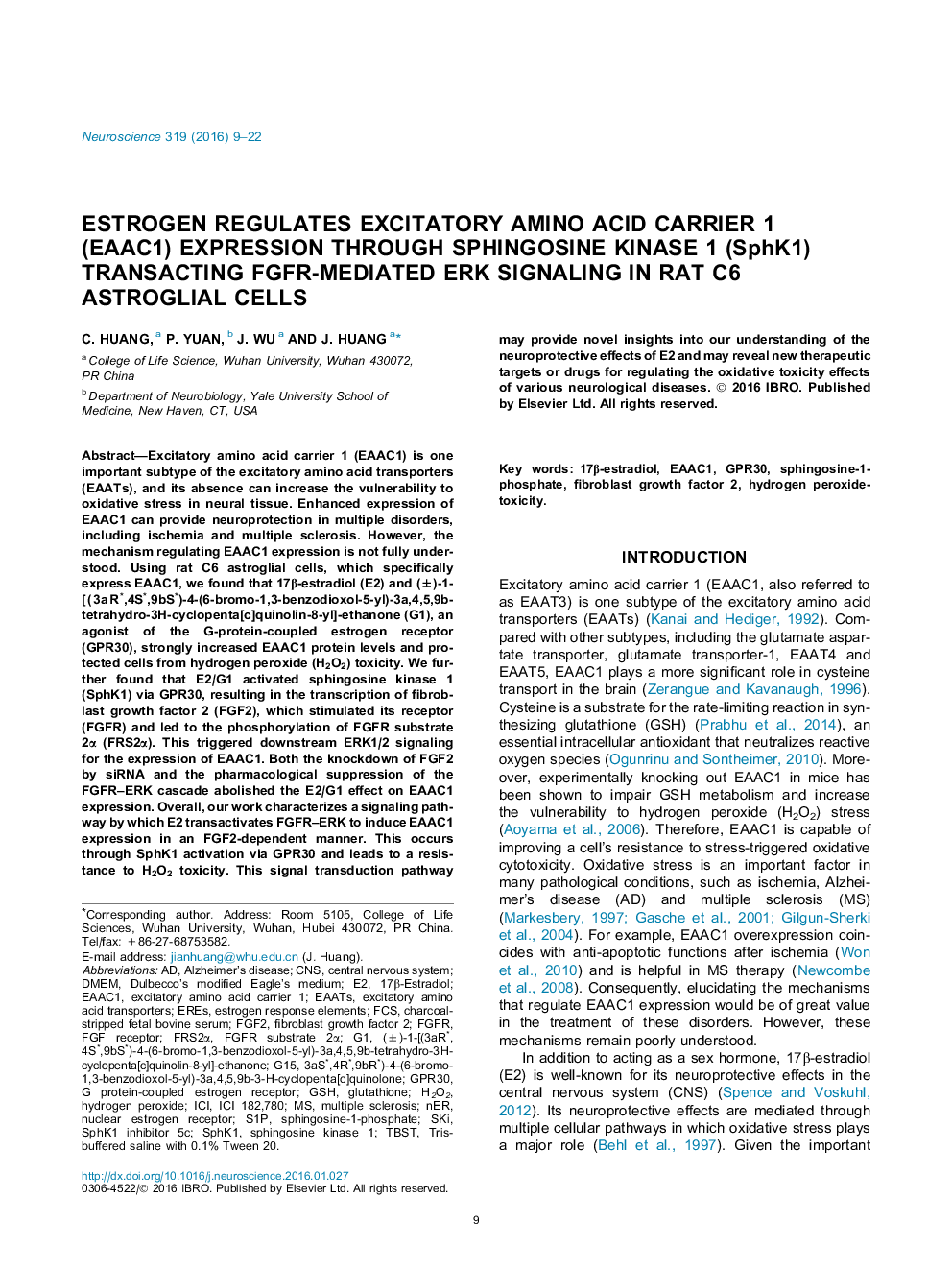| کد مقاله | کد نشریه | سال انتشار | مقاله انگلیسی | نسخه تمام متن |
|---|---|---|---|---|
| 6271349 | 1614757 | 2016 | 14 صفحه PDF | دانلود رایگان |

- Estrogen (E2) induced EAAC1 expression with a resistance against H2O2 toxicity.
- E2 activated Sphk1 to evoke FGFR-ERK cascade and subsequent EAAC1 synthesis.
- GPR30 mediated the downstream events of E2 in regulating EAAC1 expression.
- This study may reveal new targets or drugs for diseases related to oxidative stress.
Excitatory amino acid carrier 1 (EAAC1) is one important subtype of the excitatory amino acid transporters (EAATs), and its absence can increase the vulnerability to oxidative stress in neural tissue. Enhanced expression of EAAC1 can provide neuroprotection in multiple disorders, including ischemia and multiple sclerosis. However, the mechanism regulating EAAC1 expression is not fully understood. Using rat C6 astroglial cells, which specifically express EAAC1, we found that 17β-estradiol (E2) and (±)-1-[(3aRâ,4Sâ,9bSâ)-4-(6-bromo-1,3-benzodioxol-5-yl)-3a,4,5,9b-tetrahydro-3H-cyclopenta[c]quinolin-8-yl]-ethanone (G1), an agonist of the G-protein-coupled estrogen receptor (GPR30), strongly increased EAAC1 protein levels and protected cells from hydrogen peroxide (H2O2) toxicity. We further found that E2/G1 activated sphingosine kinase 1 (SphK1) via GPR30, resulting in the transcription of fibroblast growth factor 2 (FGF2), which stimulated its receptor (FGFR) and led to the phosphorylation of FGFR substrate 2α (FRS2α). This triggered downstream ERK1/2 signaling for the expression of EAAC1. Both the knockdown of FGF2 by siRNA and the pharmacological suppression of the FGFR-ERK cascade abolished the E2/G1 effect on EAAC1 expression. Overall, our work characterizes a signaling pathway by which E2 transactivates FGFR-ERK to induce EAAC1 expression in an FGF2-dependent manner. This occurs through SphK1 activation via GPR30 and leads to a resistance to H2O2 toxicity. This signal transduction pathway may provide novel insights into our understanding of the neuroprotective effects of E2 and may reveal new therapeutic targets or drugs for regulating the oxidative toxicity effects of various neurological diseases.
Journal: Neuroscience - Volume 319, 5 April 2016, Pages 9-22